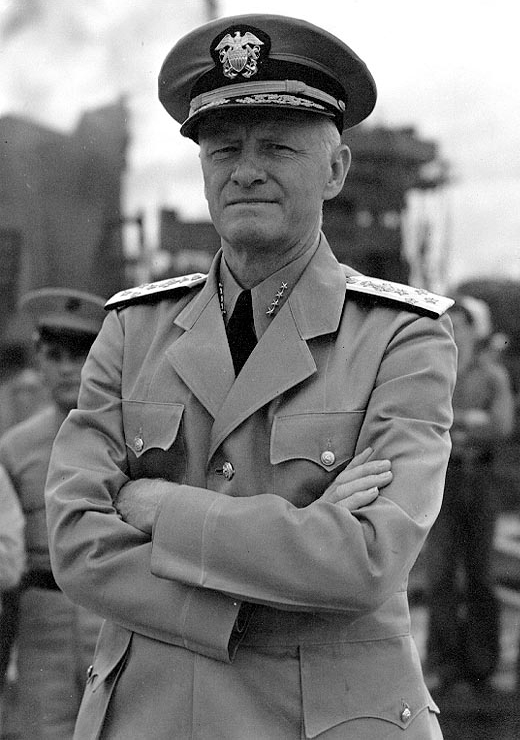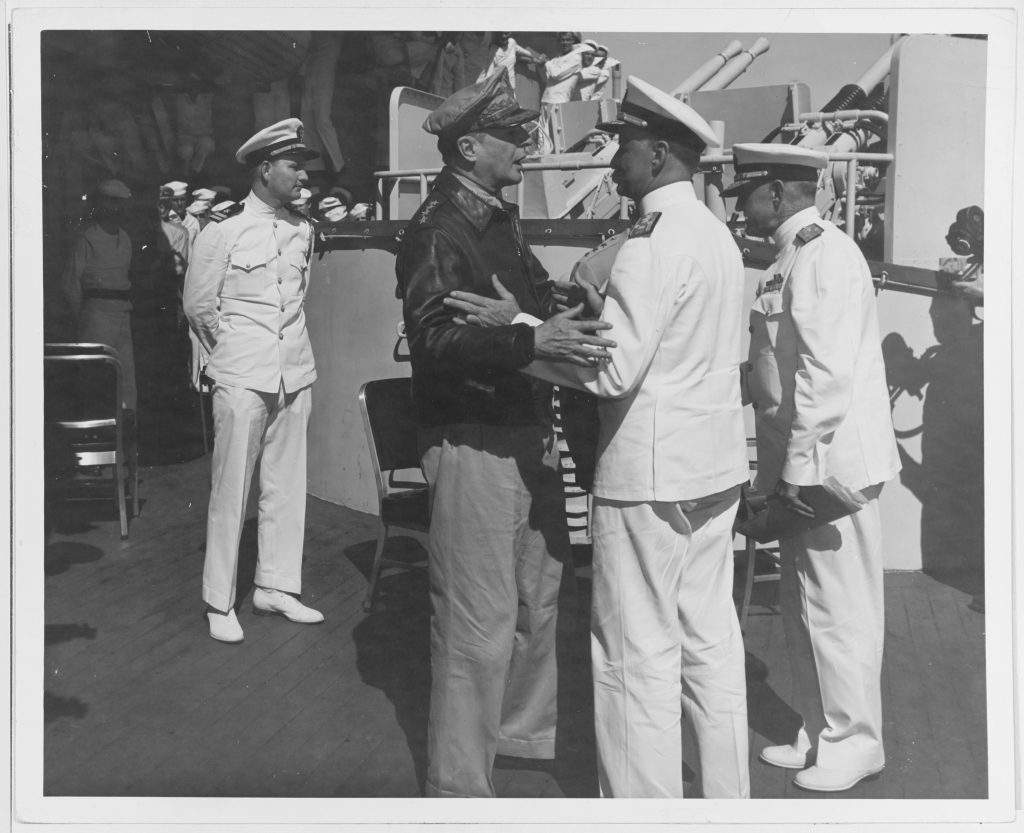
Commander-in-Chief, US Pacific Fleet Japan – 1942
In the aftermath of the devastating Pearl Harbor attack on December 7, 1941, Rear Admiral Chester W. Nimitz swiftly rose to prominence. Appointed by President Franklin D. Roosevelt just ten days later, Nimitz became the Commander-in-Chief of the United States Pacific Fleet (CINCPACFLT). The symbolic change of command took place on the submarine Grayling, an unconventional venue due to the destruction of battleships in Pearl Harbor.
Facing resource shortages, Nimitz confronted the formidable task of organising his forces to halt the Japanese advance. A crucial advantage emerged as the United States had cracked the Japanese diplomatic naval code, providing valuable intelligence for the Pacific theatre.
By March 24, 1942, the Combined Chiefs of Staff designated the Pacific theatre as an area of American strategic responsibility. Divided into three key areas, Nimitz was appointed “Commander in Chief, Pacific Ocean Areas,” giving him operational control over all Allied units in the vast Pacific.

In strategic planning, Nimitz, alongside Admiral Ernest King, rejected General MacArthur’s proposal to advance through New Guinea and the Philippines. They advocated for an island-hopping campaign, bypassing Japanese strongholds until reaching Okinawa. President Roosevelt compromised, giving both MacArthur and Nimitz their own theatres. The two Pacific theatres were favoured, to the dismay of generals George Marshall and Dwight Eisenhower, who favoured a Germany-first strategy. King and Nimitz provided MacArthur with some naval forces but kept most of the carriers. However, when the time came to plan an invasion of Japan, MacArthur was given overall command.
The Coral Sea and Midway battles tested Nimitz’s strategic acumen. Despite losses, the Battle of the Coral Sea thwarted a Japanese invasion, and the decisive Battle of Midway shifted the balance of naval power in favour of the Allies.
The Battle of Guadalcanal followed, leaving both forces depleted but securing a crucial foothold. Subsequent campaigns in the Solomon Islands and New Guinea neutralized Japanese threats, establishing Midway as a forward submarine base in 1943.
In 1943, Nimitz consolidated resources for major fleet offensives. The Gilbert and Marshall Islands campaign, destruction of the Japanese base at Truk Lagoon, and the Marianas campaign unfolded from November 1943 to February 1944. The Battle of the Philippine Sea in June 1944 saw a decisive defeat of the Japanese fleet, enabling the capture of Saipan, Guam, and Tinian.
Nimitz’s promotion to Fleet Admiral in December 1944 underscored his pivotal role. Operating from Guam, he orchestrated successful assaults on Iwo Jima and Okinawa in 1945, while strategic bombing raids targeted Japan’s home waters. Operation Starvation disrupted Japanese logistics by mining ports and waterways.
The war reached its climax on September 2, 1945, when Nimitz signed the formal surrender on the USS Missouri in Tokyo Bay. October 5, 1945, designated as “Nimitz Day” in Washington, D.C., saw President Harry S. Truman award him a second Gold Star for the Navy Distinguished Service Medal.
Admiral Chester W. Nimitz, through strategic brilliance and unwavering leadership, played a pivotal role in turning the tide in the Pacific theatre. His legacy endures as a testament to the resilience and determination that shaped a decisive victory in one of the most challenging theatres of World War II.
Source Wikipedia
See also:
